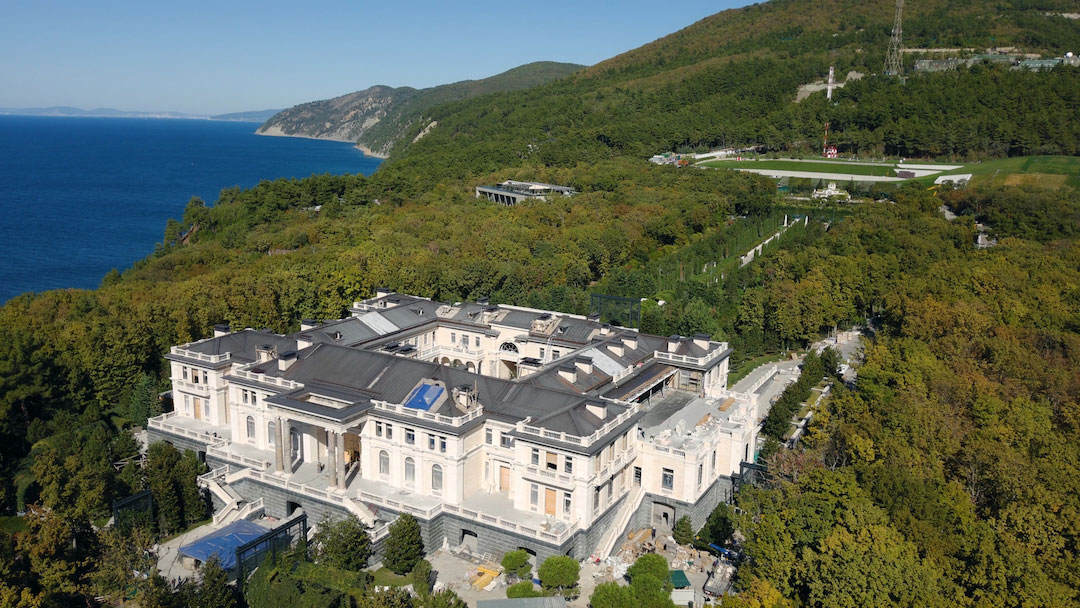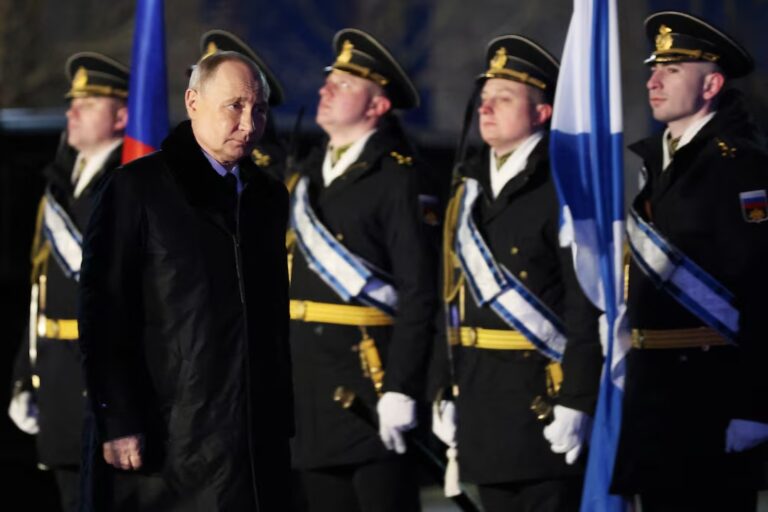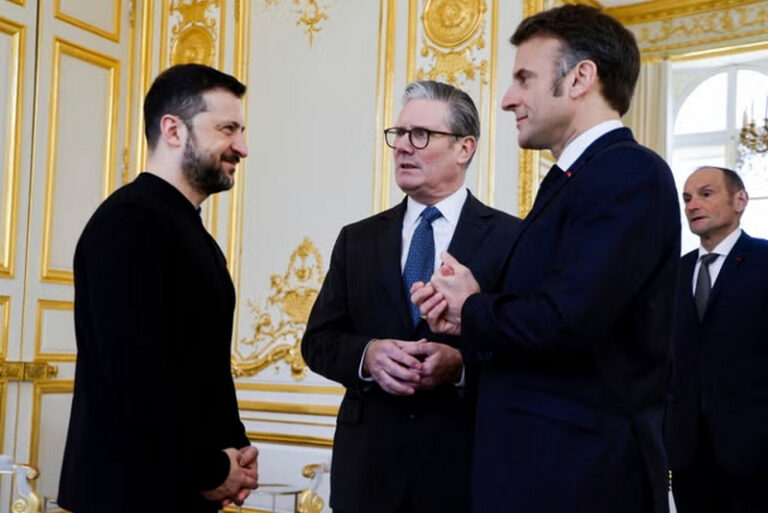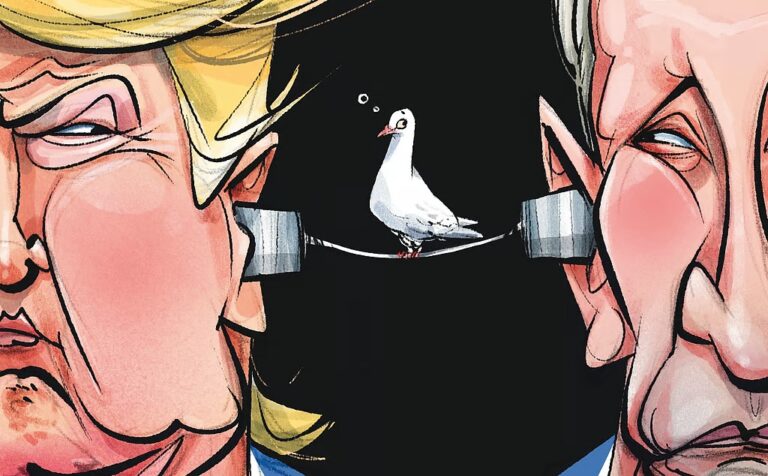Via BBC Mentions of Navalny’s name – let alone his images or voice – are a rarity on state TV — Rossiya 1 Russian TV is extremely reluctant to mention the name of the country’s protest leader Alexei Navalny, only […]
Via BBC
Mentions of Navalny’s name – let alone his images or voice – are a rarity on state TV — Rossiya 1
Russian TV is extremely reluctant to mention the name of the country’s protest leader Alexei Navalny, only uttering it in times of severe crisis.
But in an unusual move on 29 January, it not only showed images of him, but also aired his voice.
This was Kremlin-controlled TV’s response to Navalny’s investigation into what he claimed to be President Vladimir Putin’s secret seaside palace, which has attracted more than 104 million views online so far. TV showed short excerpts from it, too.
In what seemed to be a coordinated campaign ahead of pro-Navalny rallies across Russia on 31 January, the country’s three most popular TV channels all aired reports in their main evening news bulletins on 29 January seeking to discredit the claims made by the Kremlin critic, who is currently behind bars.
State-controlled Rossiya 1 and Channel One, as well as Gazprom-Media’s NTV, all strongly suggested that Navalny had deliberately misrepresented the nature of the property.
Navalny’s specific allegation that President Vladimir Putin used money obtained illicitly with the help of friends, associates and major Russian corporations to fund the billion-dollar palatial complex was almost entirely overlooked.
Channel One simply referred to the property as “the Gelendzhik palace”, and vaguely stated that “even Vladimir Putin was asked” about it earlier in the week but did not provide any context as to why.
NTV made no mention of Putin in its report at all, vaguely referring to the property as “that palace in Gelendzhik”.
Rossiya 1’s correspondent did address the allegation, but quickly refuted it by saying that it was a hotel under construction, not a residence. It also showed a man purported to be a private security guard who said it was owned by “a transport company”.
‘No sign of increased security’
Nikolai the friendly and ageing guard has no links to state security, Rossiya 1 said — Rossiya 1
Playing down the status of the building further, Rossiya 1 showed a friendly guard at the entrance, who, the TV said, was nearing retirement and was employed by a private security firm.
“Nikolai insists that he has no link to the Federal Guards Service or the Federal Security Service”, the correspondent, implicitly refuting allegations contained in Navalny’s film.
The Rossiya 1 report showed Nikolai saying that he had worked at the site for 10 years and “not seen Putin a single time”.
“The owners of the hotel complex have asked not to be named, rightfully fearing that this entire story will hit their relatives,” the correspondent said.
Tycoon Arkady Rotenberg, who is a childhood friend of Putin’s, subsequently said the building was his.
The reports were less concerned with delving into the legal status and ownership of the complex, as they were about exposing apparent discrepancies between the footage in their possession and what Navalny had shown.
NTV and Channel One used footage from pro-Kremlin Telegram channel Mash, while Rossiya 1 sent their own correspondent to the area. The Mash report was shown in full on Rossiya 1’s rolling-news sister network Rossiya 24. The reports gave the impression that Navalny had significantly overstated the secrecy and luxury of the palace.
“For the sake of secrecy [Navalny’s team] added that mere mortals could not go there by land, sea or air, ” Channel One reported, before adding that Mash “used the most accessible type of transport – a car” to reach the property. Despite trying, the reporters “could not find any signs of increased security after all, unless you count this thin wire fence around the construction site”, the channel said.
According to Channel One, Mash journalists were “disappointed” to find the property with such ease and in such a state.
“In Navalny’s film the palace looks very different,” NTV’s correspondent said, showing footage of bare concrete walls, as opposed to the expensive computer-generated interior shown in the Kremlin critic’s film.
“It is not very royal at all here – it is dirty, and there is construction work ongoing,” Rossiya 1’s correspondent said, adding that “there is not even a hint of what is shown in this film”.
Navalny’s ‘virtual’ revamp
The channel also brushed off questions about the no-fly zone over the mansion, reiterating the official reason that it was the nearby Federal Security Service (FSB) facility rather than the palace made the measure necessary.
Navalny’s caveat that the property was currently undergoing major renovation after mould had been found was not given much prominence as Channel One mentioned it briefly, saying his team were merely “trying to make excuses”.
Alexei Vanyayev, a member of Russia’s architects’ union told Channel One that the building was likely “at an early stage of construction” rather than undergoing renovation as Navalny had claimed, citing the absence of water supply, plumbing, ventilation and electrics in the Mash video.
The channels all concluded that Navalny had falsified his findings and some correspondents hinted at foreign involvement in the alleged deception.
“The blogger did some virtual refurbishment inside, decorating it with gold,” NTV reported, adding that Navalny used “expensive computer graphics” hoping to stir up discontent.
His team would have been disappointed “if they had even once come here but they never did”, Channel One said.
“Instead, all the pictures showing luxury interiors, as it turns out, are the work of computer graphic specialists from the German film studio Black Forest Studios,” it said.
Video ‘not made by Russians
The channel quoted a report from the German website Schwarzwaelder Bote about Navalny allegedly engaging the services of a local film studio which “as early as in December by a strange coincidence received a decent order not from just anywhere but from California in the United States”.
Rossiya 1’s correspondent and his guide on site were amused by Navalny’s allegation that part of the property was a “dirt room” – a possible mistranslation of the English phrase “mudroom” the correspondent suggested.
“It appears that the script for the film was written in English and it was translated into Russian automatically, not delving into the subtlety of whether such rooms even exist,” the correspondent said.
One picture shown by Navalny, he alleged, was in fact the interior of a library in Prague. In Navalny’s footage of the exterior “instead of the Russian eagle on the palace gates they slapped on the Montenegrin one with a lion emblazoned on the shield… Clearly it was not made by Russians,” he said.
On the basis of such alleged alterations by Navalny’s team, the correspondent asked: “Where is the guarantee that all the other so-called documents and photographs are real? Who will believe them after all this?”
Only younger Russians would find such work convincing, he suggested, and “it was for this generation that all of these virtual tours were designed”.





